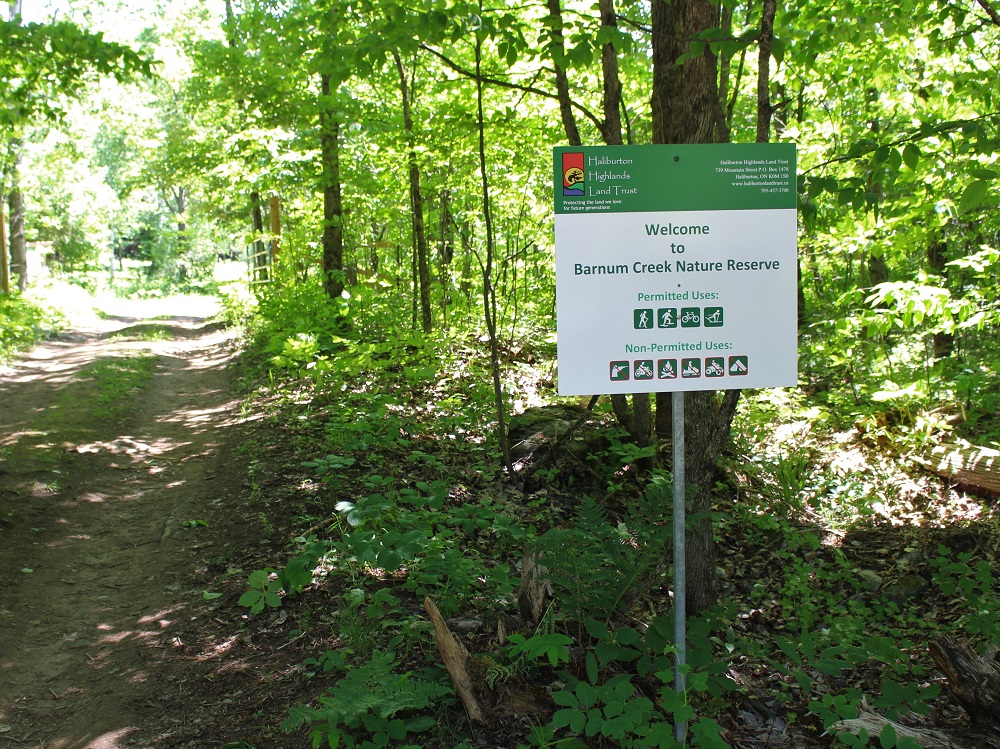The Haliburton Highlands Land Trust (HHLT) has developed an advocacy policy that they say will help guide the organization in environmental protection efforts.
At the HHLT’s virtual AGM on June 15, board members explained the new document which outlines how and when the Trust will get involved with issues, whether through media campaigns, public speaking, publishing research and more.
“The question had been raised: do we see a role for our organization, to take what we know about the importance of protecting wetlands and say something – bring that forward?” asked board member Jennifer Dailloux.
“Any sort of policy that could foreseeably have a detrimental impact, the board has agreed that we could explore getting involved,” Dailloux added.
Board member Joan Duhaime told HHLT members that with no official policy, it was difficult for the Land Trust to put advocacy to work.
“We kind of almost had to say ‘no’ until we had the policy,” Duhaime said.
While the board did not give specific details of any upcoming advocacy work, members of the HHLT and the public will be informed of projects, and only advocacy efforts endorsed by the board can be conducted under the HHLT.
Besides community interest, the policy is prompted by a change in Canadian Revenue Agency guidelines for registered charities.
Last November, CRA released revised regulations which allows charities to engage in lobbying, public policy dialogue and more, only if it is in line with the organization’s charitable purpose.
HHLT chairperson Shelley Hunt said while protection of local habitats is a foundational principle for the trust, the permission to formally advocate for or against policies “is just another tool in the toolkit.”
“Anything we decide as an organization that we’re going to get involved with, will be a board decision,” Hunt said.
Board members voiced enthusiasm for how the new policy could help shape protection efforts in the Highlands. “It will be an adventure but a good one for sure,” Dailloux said.
A pandemic review
HHLT has had a busy 2020: they opened Barnum Creek Nature Reserve and its seven kilometres of trails and received multiple grants and bursaries to assist with ongoing costs and capital projects.
While COVID-19 cancelled many in-person events, funds from grants totalling over $100,000 have been used to further the organization’s goal of preservation and education of the County’s ecosystems.
An RBC Foundation grant of $25,000 funded the mapping and evaluation of the Lochlin Wetland Complex. TD Friends of the Environment Foundation also provided money to run the HHLT’s Discovery Days virtual education programs.
The HHLT also was key in new protections for the ‘Highlands Corridor,’ consisting of wetlands between Queen Elizabeth II Wildlands Provincial Park, Kawartha Highlands and Silent Lake Provincial Park.
An Ontario Trillium Foundation Resilient Communities Fund grant will go towards redesigning the HHLT’s website and improving capacity for virtual programs.
Much of the trust’s fundraising went online this year.
“We had to adjust our plans to pandemic restrictions but managed to run successful fundraisers in 2020,” Hunt said.
She explained how sales of Barnum Creek and the Burnt River jigsaw puzzles, a new virtual “Rock our World” fundraiser and a near doubling in membership fees contributed to that success.
The HHLT also received support from local businesses and community organizations.
HCDC donated $6,700 for new gates at Barnum Creek Nature Reserve, Haliburton’s Rotary Club contributed $3,500 in donations in 2020 and Canoe FM bingo proceeds equalled $5,000.
“We’re very lucky to have strong support in the community,” Hunt said.
For a full report of the Land Trust’s activities, visit their website: haliburtonlandtrust.ca





